Our City Walk: German History in Nadodrze – A Free Walking Tour in Wroclaw
Updated: 01/02/2024
/
In this article we will take you on a virtual self-guided tour about German history and visible German traces in the Wroclaw Nadodrze district. Of course it can be done as real city walk too! More information on how to navigate with this page is available further down.
You might know that Wroclaw used to be an international city at any given time in history. The city was ruled by Prussian Kings, the Czechs, the Habsburg Monarchy, Hungarian emperors, Russian czars, the Germans and eventually Poland (again). All of them left their individual marks which are visible in the architectural history of Wroclaw.
When German Breslau became Polish Wroclaw
Looking into the more recent history, Wroclaw used to be a German city named Breslau. When the Poles were resettled into their new home after the war, all traces of the Germans were ordered to be destroyed. This task was completed with a high degree of success.
Nevertheless today you will observe paint coming off from buildings where German (and other historic) signs are suddenly appearing again. The Nadodrze district is one of the parts of Wroclaw where this unique phenomenon becomes visible now.



Welcome to our Free Walking Tour in Wroclaw Nadodrze
We believe that it is a charming idea to create a city walk in Wroclaw to explore the still visible German traces. That is why we have created an interactive map with the most significant spots we found.
We could not decipher all of the signs and some will remain a mystery to us. That is why we highly appreciate if you write a comment below in case you have something to add 🙂
As you see in the picture above on the right, extensive restoration works are currently carried out in Nadodrze. Some of the buildings inevitably are going to lose the pre-war traces soon, while others re-painted the historic signs and keep them visible.
You can click or hover on the numbers in the map to see a picture of the stop you selected. On a side note: This map is optimised for desktop or tablet screens. On smartphones you might just see huge black dots – so please stay in touch with us and return from another device soon 🙂
Remark: In this post we purely focus on Nadodrze. If you want to discover more old traces here you will find an online map with more than 200 such points.
Map of German Traces in Nadodrze

Our Free Walking Tour in Wroclaw on German History in Nadodrze is virtual or real
In our Free Walking Tour we have a clear focus on old German signs that are still visible today. Nevertheless there are two special buildings that we included along with German signs into the tour. We believe they totally deserve it and are on the route anyway.
We created the map above to get a first overview, but it can be used for a self-guided city walk too. We sorted the waypoints that you will walk in a loop. The finish line is just next to the start, at one of the best cafes in Wroclaw for you to enjoy a cake and coffee.
How to use this article to navigate in a self-guided walk
All street names below are clickable and will open the navigation in Google Maps. Just click on the street name of the next point. Then the navigation will guide you there. The map on top might not be the best to navigate on smartphones, therefore this solution enables you to use this city walk article in a very mobile friendly way too 🙂
Ready? Let‘s get started!
Our virtual (or real) free walking tour about German history in Wroclaw Nadodrze starts at Wojciecha Cybulskiego 5. We believe it is the best starting point as it is located only 5 minutes away from the beautiful University.
Here you will be able to see a sign which leads you to the wrought. On the picture with the old door you can read it in German on the left: „Zur Schmiede“.
On the opposite at Wojciecha Cybulskiego 6 you find old Polish signs, probably from the 50’s or 60‘s.
The next stop is Kurkowa 31. You are entering the streets where the popular Steven Spielberg movie „Bridge of Spies“ was shot.
The German sign is in a pretty serious condition and hard to read. The end seems to be “…..eibung“. If you are able to read more or have any idea, please comment!
At the corner from Kaszubska 1 to the main street (Pomorska) the next sign is waiting for us.
With high confidence we can say it used to be a pub, on the right side it reads „Gastwirtschaft“. The left side could be a name…
The next stop at Ptasia 13 used to be Große Dreilindengasse 4 back in German times. You will find a brewery logo incorporated in the house here. The filed owner in 1890 was Wilhelm Nitschke.
After some research we did, it looks that he owned two breweries. From 1885 to 1892 the first one at Schiesswerderplatz 12/16 (Now: Plac Strzelecki). The second brewery operated from 1890 to 1898 at Neue Junkernstrasse 6 (Now: Kilińskiego).
In addition the pub „Böhmisches Brauhaus“ which welcomed guests from 1880 to 1911 is connected to his name.
Most likely the tenement house that you see here used to be their home and administrative office at the same time.
Around Plac Strzelecki 8 you still might find some traces of the previously mentioned brewery – we did not.
What you can see here is a sign from a former metalware store – in German „Metallwaren“.
If you want to see this one, do it rather sooner than later as the surrounding tenement houses were already all restored.
Update from October 2022: Now a wooden protection was installed, it is hard to read it anymore…
The next stop at Łowiecka 9 brings us to a former stationery store.
In German letters it is still very well readable: „Schreibmaterialien“.
The next street is a true paradise for hunters of old German signs. Three pieces in just one street!
The first one is visible at Biskupa Tomasza Pierwszego 11 – more or less…
We have no idea what it could mean. Question out to all detectives with knowledge of the German language!
Who knows what this could mean?
Fortunately our eyes were good enough again to read the sign at Biskupa Tomasza Pierwszego 8.
Here it clearly is a sign of a furniture factory – in German „Möbel-Fabrik“. The first picture on the right is from 2020 and the one below after the renovation early 2022.
Now you will witness a beautiful example how the Polish people in Wroclaw included the past influence by making it part of the future.
At Biskupa Tomasza Pierwszego 16 the tenement house was already fully restored but the German signs were kept and re-painted.
Although this tour is mainly about German signs, we believe it is worth to include the Nadodrze Train Station on the way – opened in 1868.
The German name was „Bahnhof Odertor“ and today in Polish it is „Dworzec Nadodrze“. Don’t miss to try the Knysza from Bistro Nadodrze!
In the entrance to Kleczkowska 8 you find an example of German pre-war tiles. Incorporated in the floor you will read „19-??LVE-04“ (??LVE was SALVE). In other places around Nadodrze you find similar ones, even in better condition.
If you are into tiles, we have a recommendation at the bottom of this post for you – there is someone who makes much more beautiful pictures of them than we do 😉
At the primary school at Kleczkowska 2 the next sign can be observed.
Already during German times it used to be a school and during the war it served as hospital.
It was built in 1901 as the sign around the coat of arms is letting us know (“Erbaut” translates into “built”).
Another non-German sign stop comes at Ołbińska 30. You can admire German bunker architecture from 1941.
A twin object serves as contemporary art museum at Plac Strzegomski – we highly recommend a visit there!
At Świętego Wincentego 10 we are happy to introduce you to another renovated tenement house that kept the German signs.
Here the translations:
- Fahrräder: Bicycles
- Motorräder: Motorcycles
- Nähmaschinen: Sewing machines
- Schreibmaschinen: Typewriters
- Grammophon: Vinyl players
- Elektroanlagen: Electrical Systems
Don`t miss to check out the other side of the street where another renovated example is waiting for you…
The entrance to Ludwika Rydygiera 50 will remind you about the traditional concept of family.
On the left a gentlemen is smoking his pipe while the lady below is sweeping the floor.
The Story on the right side is not much different. The gentlemen is on the top, checking if the soup is ready. Meanwhile the lady is taking care of the kids.
Another little hidden gem is the police station at the corner you will pass on the way to the next stop. Check out their doorknob…
Just a few meters further another old German sign is visible at Paulińska 10.
In German is declares to be a „Werkstatt für moderne Fußbekleidung“. Literally translated that is a workshop for modern footwear.
In the street of Paulińska, some restoration works were going on lately. Unfortunately one sign at the corner on the opposite of our next stop is lost forever. You can see how it was overpainted in the picture on the top of this article.
Nevertheless, at Paulińska 12 a little piece of history remains. The only word we can decrypt is „en detail“ (French).
Again, if you have any suggestions what this could mean, please let us know in the comment section below and we will gladly update this text here with your credits 🙂
One more example for a restored tenement house with German signs kept is waiting for you at Władysława Łokietka 12.
In addition to the name Ernst Krause you see that it used to be a saddlery (Sattlerei – Täschnerei).
In the same street in number 5, almost at the opposite of the sign above, you will reach the Nadodrze Infopunkt Łokietka 5.
The team from Łokietka 5 is not only organizing plenty of events like the night of Nadodrze, culinary days, kinomurals and much more we showed you in our article about Nadodrze.
They set up free walking tours from time to time. If you happen to speak Polish, we recommend to check their website for latest events.
If your knowledge of Polish is limited, check out the English tours in Nadodrze here.
Before we forget to mention it, in their office you can buy a cool bag with German signs as seen on the left 🙂
Forget about dwarf hunting in Wroclaw, German sign hunting is the next big thing! 🙂
We had to add one more picture for this stop in December 2020 as a whole new category was created: „Old signs which were restored, but unfortunately in a wrong way“…
At the corner of this stop, precisely at Władysława Łokietka 2, you see the old sign „Zur Eisenhandlung“. Wait, no! It is „Zur Eisenhandtum“ – what is that??? Well, looks like a typo 😉 We will continue to monitor it and update you if it will be corrected.
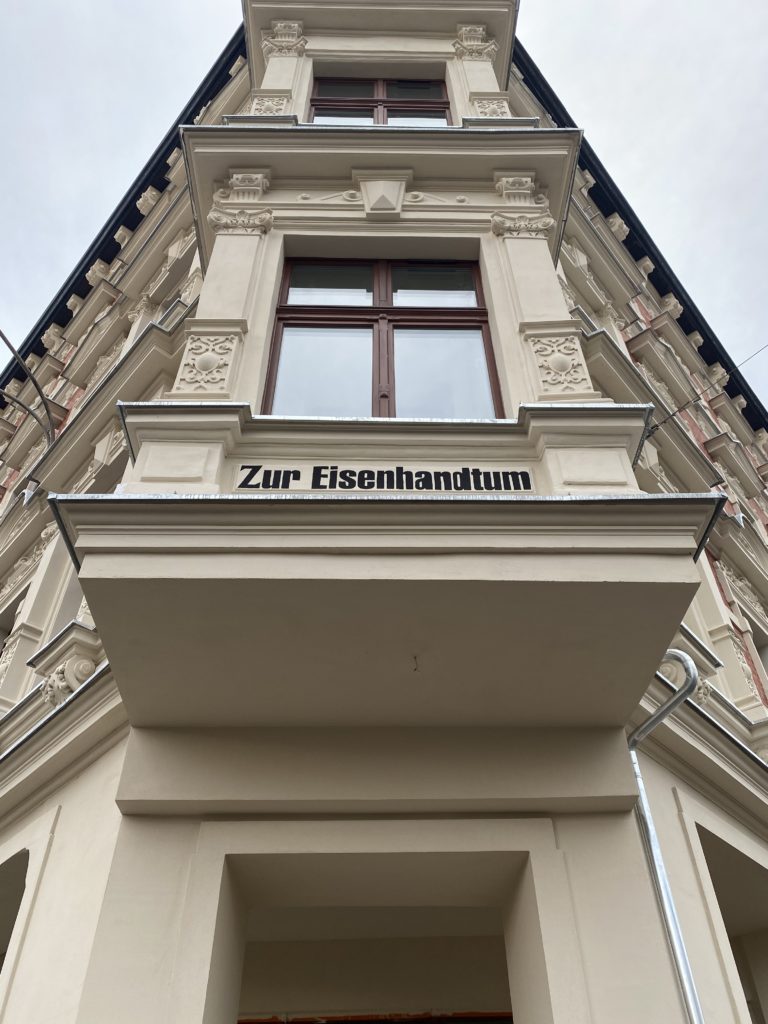
Our next stop at Henryka Probusa 1 shows a former grocery store.
We can read that vegetables („Gemüse“) and fruits (Früchte“) were sold here some years back.
Unfortunately the bottom text is hard to read again and at this point, we will leave it up to you to interpret it 😉
One of our readers sent some pictures and was able to read the sign above „Gemüse“ which is „Heilwasser“ (literally healing water) but not visible in this picture. Another reason to check it out for yourself 🙂
In 2022, unfortunately some parts got sprayed over, so it got a bit harder to read.
Almost at the end of our tour at Jedności Narodowej 45a we have an example of what happened directly after the war.
All traces from the German enemy had to be removed or at least to be made unrecognizable. Here the sign “Elisenhof 1913” was destroyed.
With a bit of imagination you can still read it…
We finish our (virtual or real) free walking tour at the Pomiędzy cafe&bistro at Stanisława Dubois 2.
Not only because we recommended it in our favourite cafes of Wroclaw, but likewise because of the historic building which used to be a bank.
The poor vagabond on the left side shows his empty pockets. You see that his clothing is pretty rocked down.
The fine gentlemen on the right is well suited up. Why? Because he brought his savings to the bank and holds a savings account book in his hands. Clearly these sculptures were made before the financial crisis 😉
Now enjoy your coffee, get yourself a cake (try the Banoffee, you won’t regret it) and give your feet some rest – thanks for joining our city walk!
Looking for more Wroclaw Pre-War History?
What we showed you here is just a little preview of Nadodrze. There is much more out there, like the heart of Nadodrze, the beach bars and amazing street art just to name a few. According to the Guardian even one of the best ice-creams in Europe comes from Nadodrze! If you look around you can find much more signs. In some houses even bullet holes from the war are still visible.
Here is what you can do if you are hungry for more:
Take a tour
There are several alternative tours of Wroclaw with focus on Nadodrze. Click here to see the current available tours and fares online.
Find more old German traces
Here you will find another map with more than 200 old German traces in the whole city, created by a city project in 2020.
The great thing about that map is that it is beautifully made and very extensive. It also is available as hardcopy as you see in the picture, and the best is: You can get it for free!
Just visit the cozy Tajne Komplety book store at Rynek to pick up your free copy.
If you want to know more about the project itself, here is more information (but unfortunately only available in Polish language).
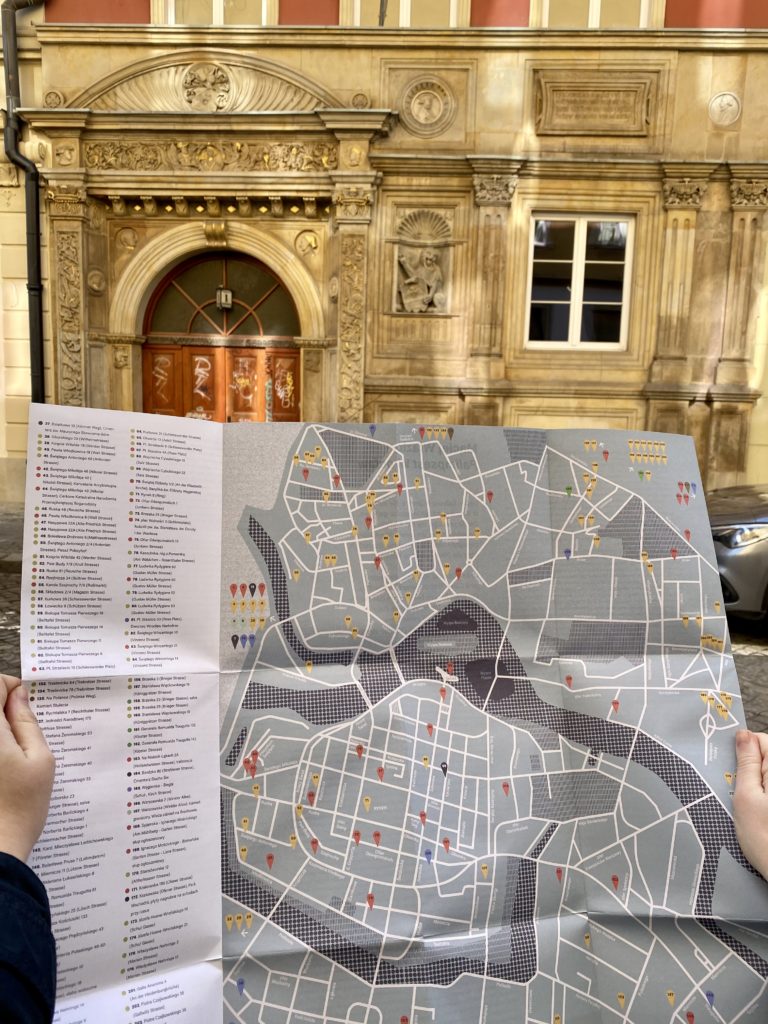
Read a book
There is a book which tells the story of Breslau transitioning into Wroclaw which we highly recommend to read.
The name is Uprooted – How Breslau became Wroclaw during the Century of Expulsions and it was written by Gregor Thum.
He received lots of positive feedback, especially for his ability to write unbiased. This thoroughly researched book provides not only a high degree of interesting details, but also makes sure that Polish and German voices are heard.
Follow some really cool Instagram profiles
If you scroll down to the bottom of this page, you will see a couple of pictures from our own beautiful instagram feed. But we found some more really cool instagram profiles with pre-war related content from Wroclaw that we would love to share with you:
Maybe a little video tour?
Here in the video from „Schlesien Journal“ you can see Maciej Wlazło from the „Beard of Breslau“ instagram account above. He gives a little tour through the area.
Audio is German/Polish, but even if you don‘t understand, beautiful material just to watch.
We hope that you enjoyed this map of German traces and history in Wroclaw Nadodrze as much as we do! Don’t forget to check out our article where we tell you why Nadodrze actually is the best part of Wroclaw!
Do you think that we missed some significant spots anywhere in Nadodrze? Then please, please, please give us a little hint in the comment section below!
Do you have some other comments on this article? Help us and also help other visitors by leaving your feedback in the comment section below!
We participate in the Amazon Services LLC Associates Program, an affiliate advertising program designed to provide a means for sites to earn advertising fees by advertising and linking to amazon.com, amazon.co.uk and amazon.de. Amazon and the Amazon logo are trademarks of Amazon.com, Inc. or its affiliates.
You may also like
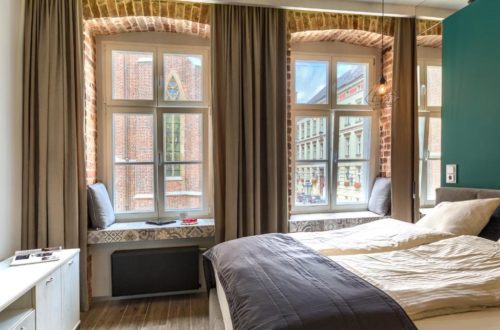
Apartments in Wroclaw – Our personal recommendations
31/03/2023
The best Pubs and Bars in Wroclaw’s Nightlife
22/09/2023









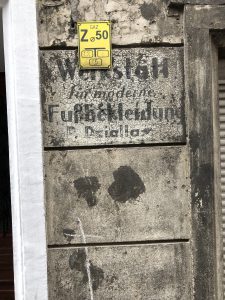
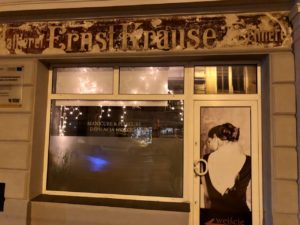

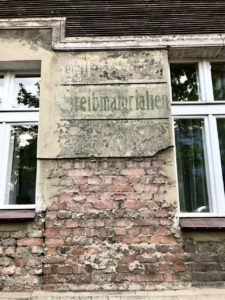




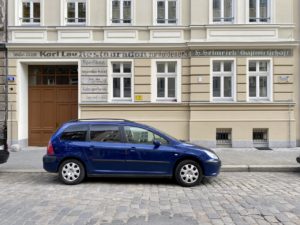





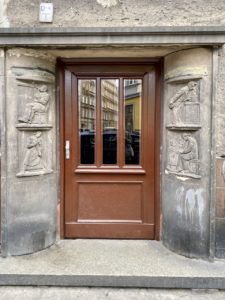
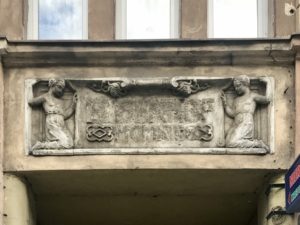



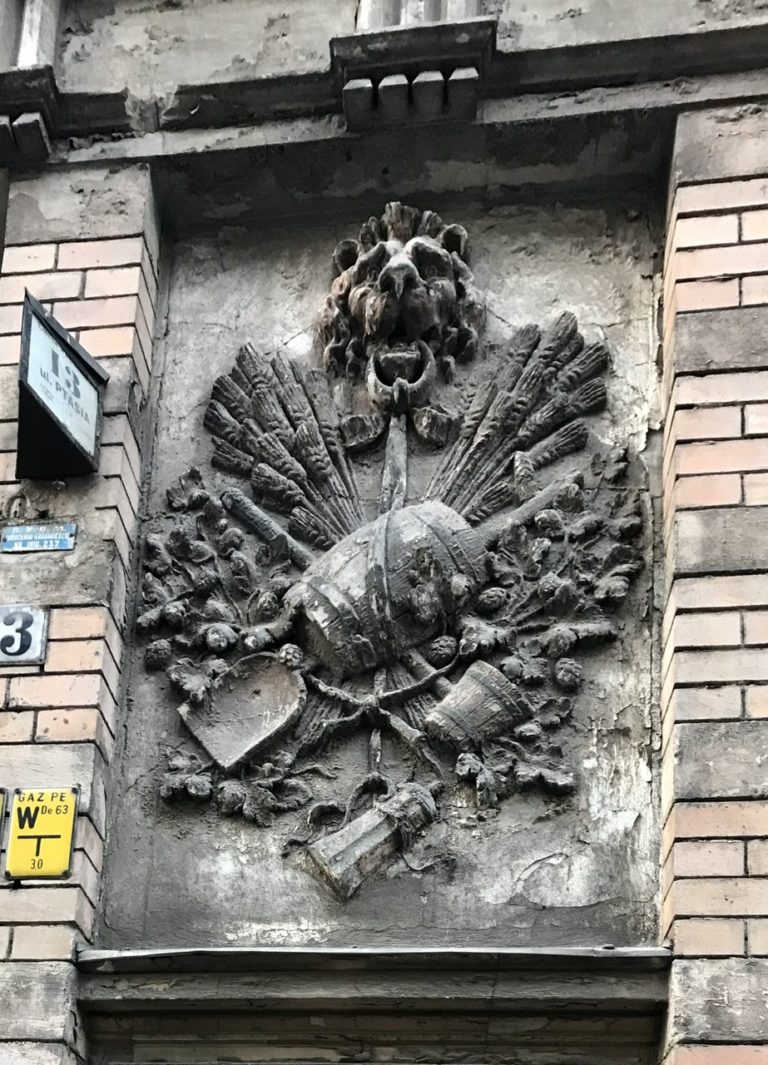

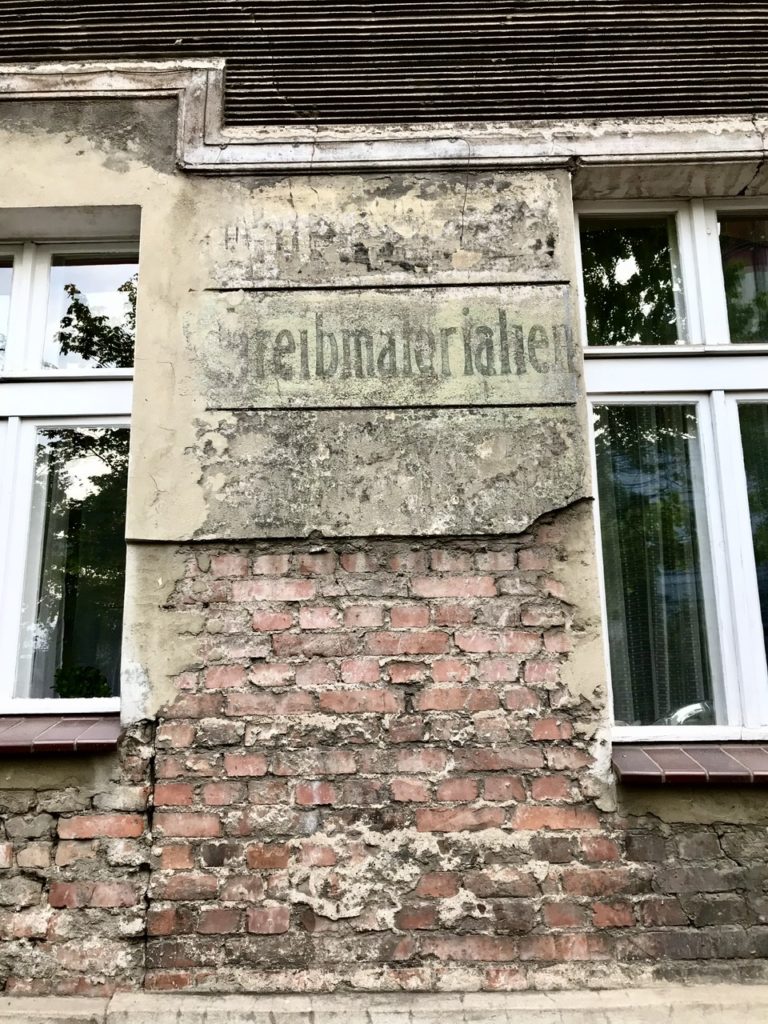
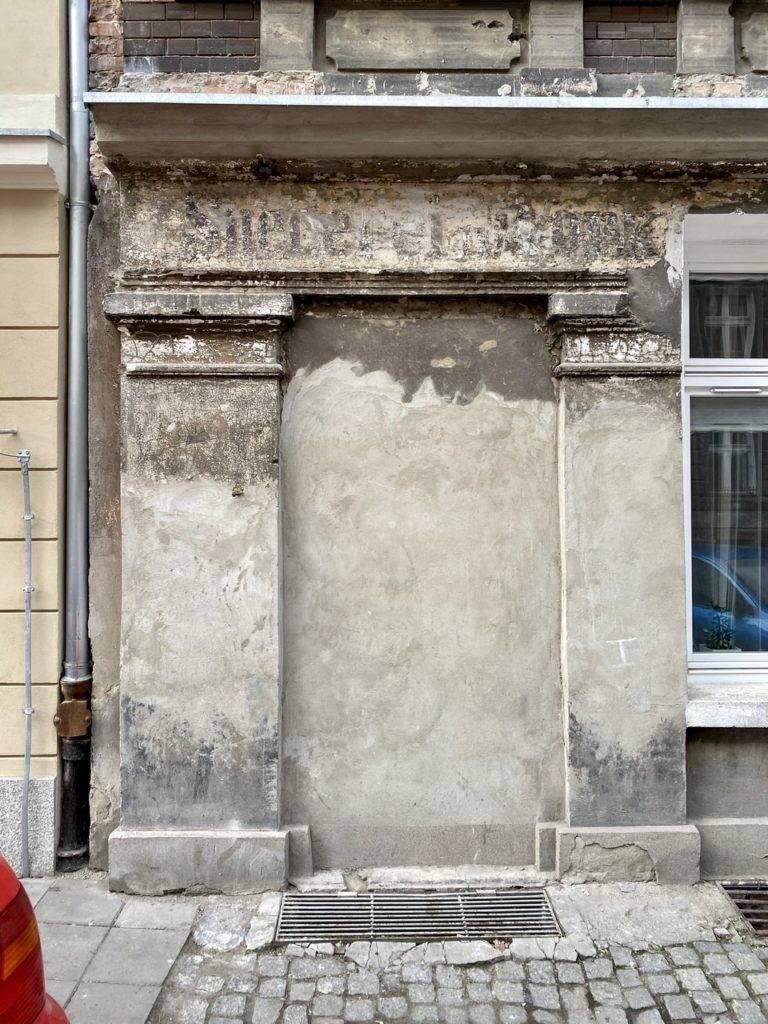




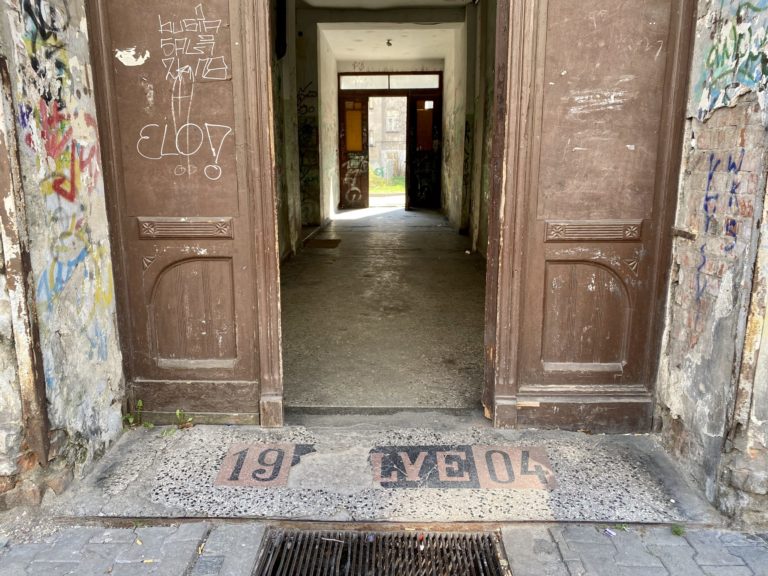



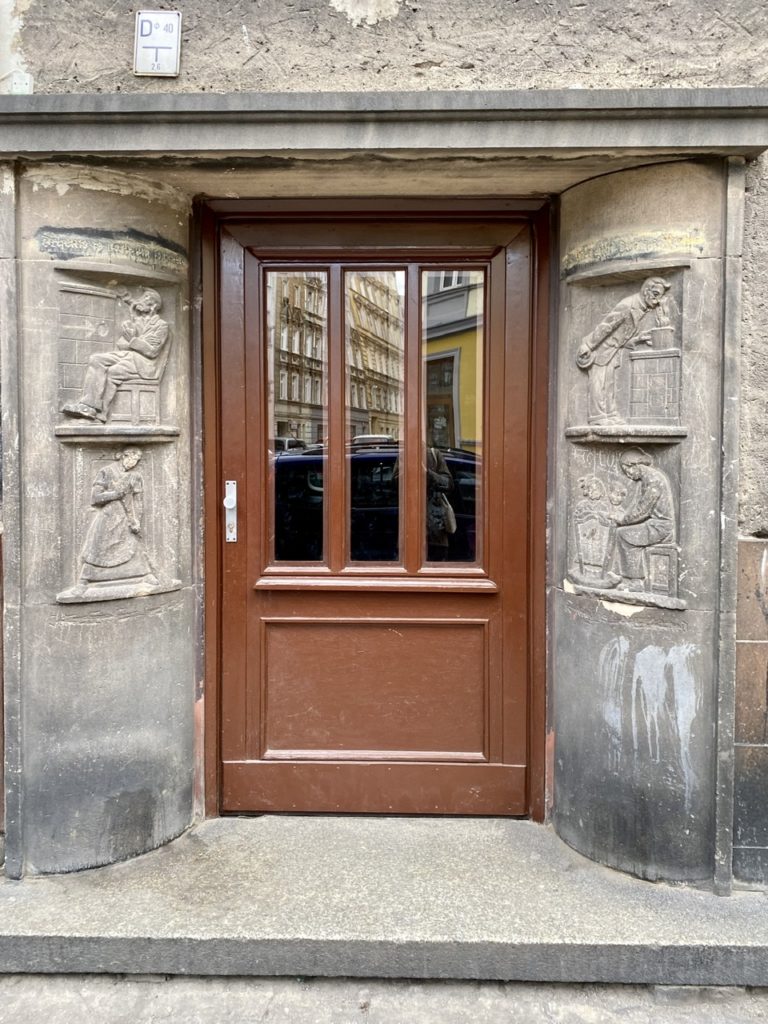


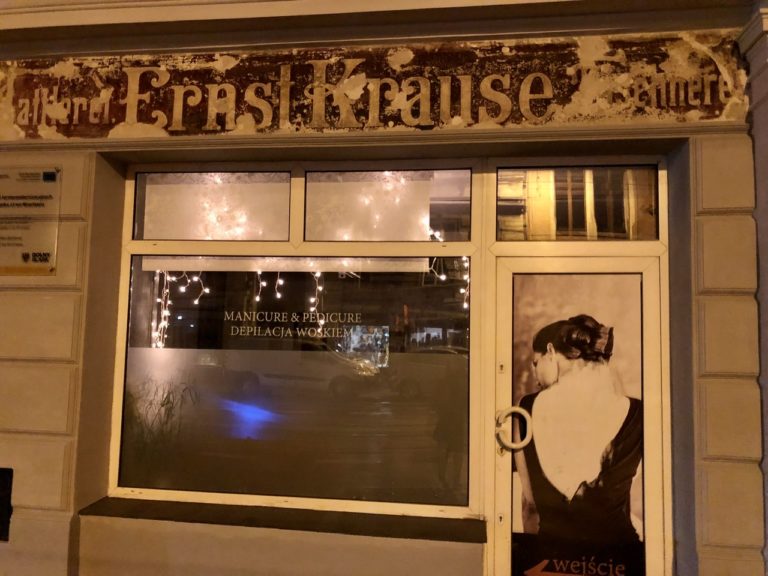





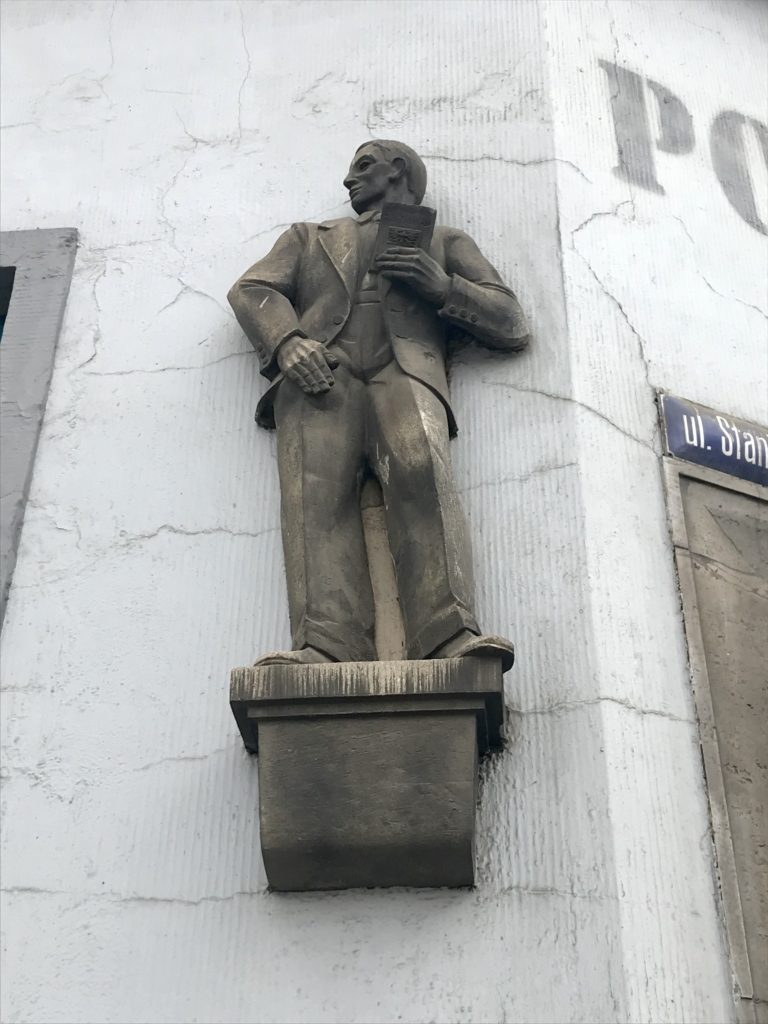






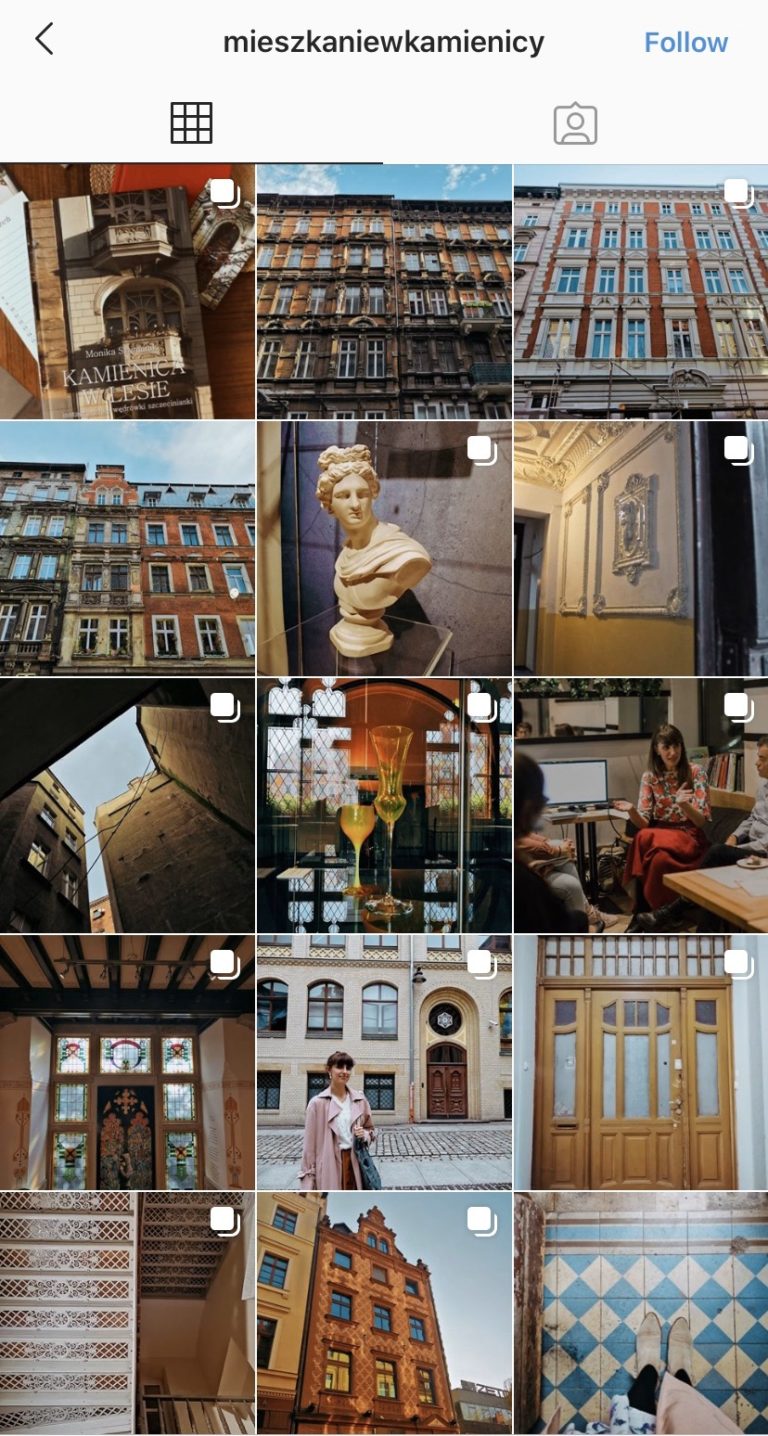



5 Comments
Heather
Thank you for this great, eye-opening tour! We did it last week — definitely better than searching for dwarfs (though the Wrocław dwarfs are appealing too). And thank you for all the great info on this website. We went to Osiem Misek on the recommendation of your Street Food post, and we agree that the food is great. We also loved AleBrowar, and we went to Karavan on the same street, which we really recommend too. We found the Neon Gallery, thanks to your museums post. And we happened to discover the Pomiędzy cafe&bistro in Nadodrze before we realised it was the end-point of this tour. Another excellent dining choice! This was our first visit to Wrocław and indeed to Poland, and your informative website with all the alternative suggestions really helped make the trip extra enjoyable. I hope we’ll be able to visit again.
Mirko
Thank you so much for your nice words, it is always great to see that somebody did the tour and enjoyed it!!! And yes, we have been to Karavan ourselves and like it a lot, we indeed should add it soon to the Four Temple District Post… It used to be a funeral home in that place, hence the interior design
Clara
Very interesting!
Thanks a lot for this little tour! 😉
JvM
12 – the dashes behind the words mean that they did not sell these items but electrical installations for them (Fahrräder-Elektroanlagen).
15 – „en detail“ may refer to ‘vente au détail’ or retail, as opposed to wholesale. The ‘ng’ may have been Bekleidung…
Stefka
Hi,
I believe the sign on Kurkowa 31 reads “Verleihung”, in English “rental”. And the shop on Biskupa Tomasza Pierwszego 11 is probably a “Specerei” which is old German for Spezerei, a shop selling spices.
Best regards
Stefka